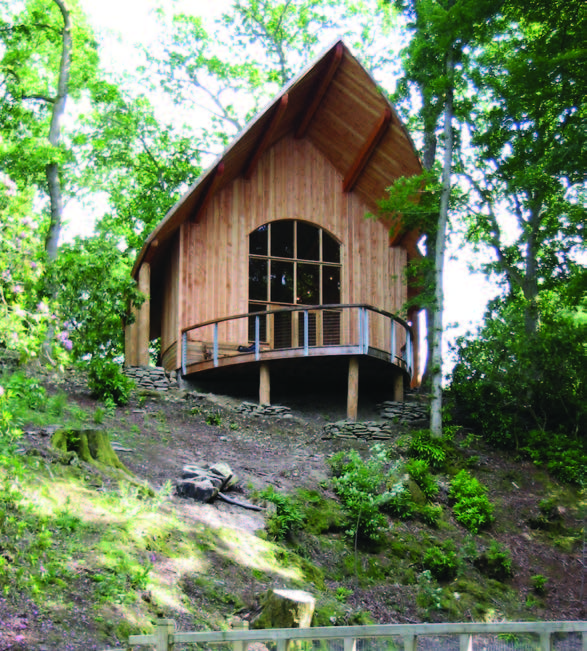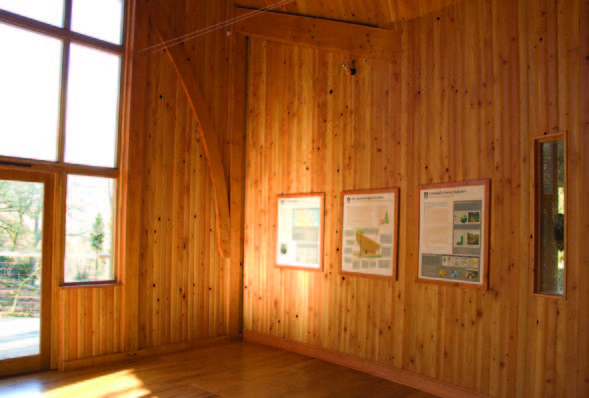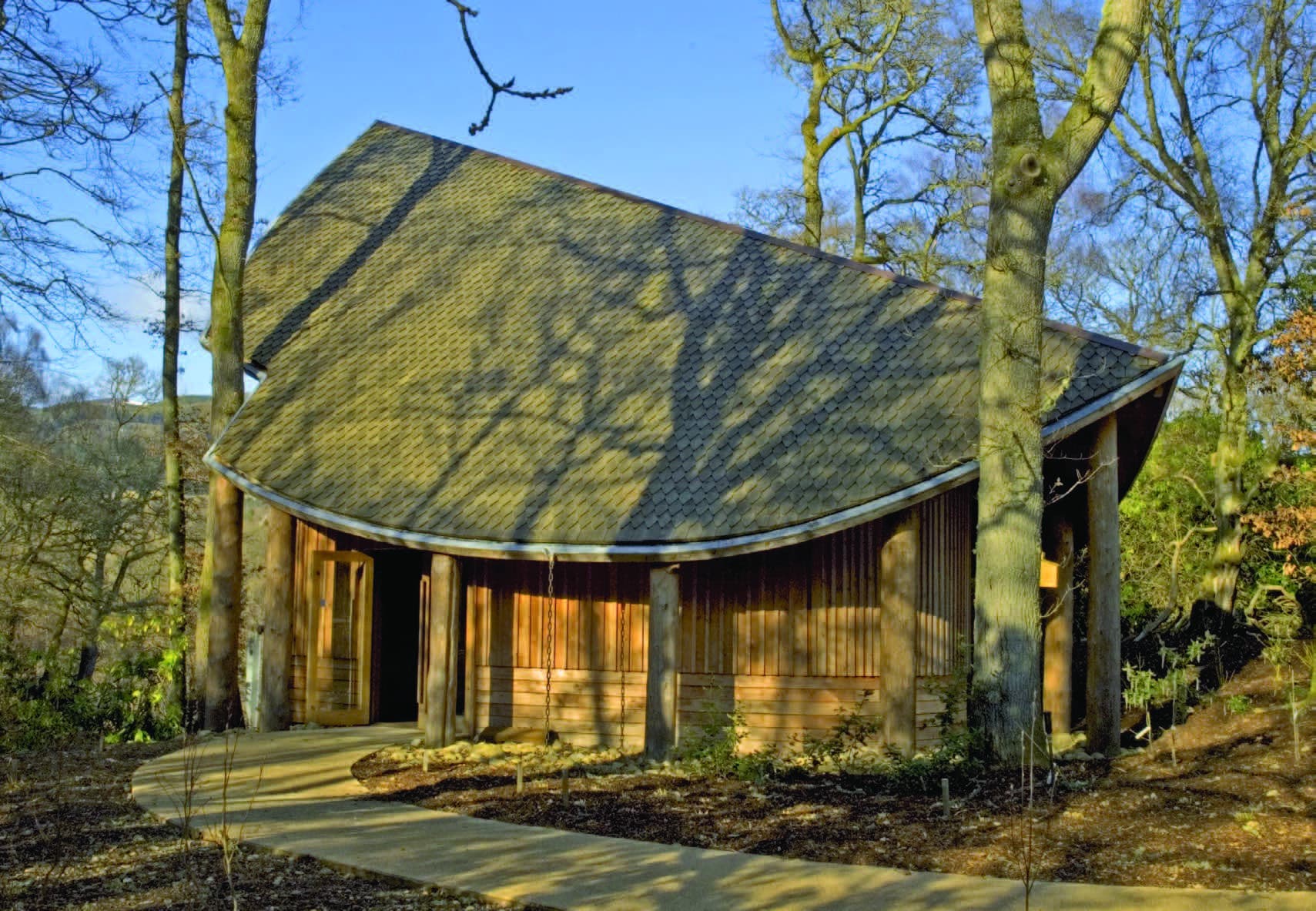The pavilion celebrates the life and achievements of Scottish botanist David Douglas. It is also a practical demonstration of the use of Scottish-grown timber. The brief, conceived by the Scottish Forest Industries Cluster, was to produce a contemporary building with organic influences on its design.
The inspiration for the shape of the building comes from several sources including the symmetrically folded seeds of Douglas fir. The David Douglas Pavilion was built for Pitlochry’s Scottish Plant Collectors’ Garden (also known as the Scottish Plant Hunters’ Garden or the Explorers’ Garden). Its design was intended to be innovative and promote the use of home-grown timber.
The primary structure is made entirely of untreated Scottish Douglas fir. The roof is clad in untreated, heartwood larch shingles while doors and windows are made from laminated Scottish oak.
The pavilion was designed and built in collaboration with the Gaia Group who were approached by Scottish Enterprise and the Scottish Forest Industries Cluster because of their strong eco principles.
Timber technologies
The timber used in this project is predominantly Douglas fir, all grown and processed in Scotland. Traditionally jointed timber elements provide the basic structure of the building, and lateral stability is provided by the building’s shape and the stick-framed curved wall.
The columns supporting the perimeter of the roof are made from larch. They are raised above the ground on galvanised steel brackets.
The roof is tiled with untreated larch shingles and the walls contain two hidden layers of oriented strand board. The interior floor is made from a variety of hardwoods. The David Douglas Pavilion has an extensive eaves overhang with a long sweeping curve.

Special timber-related features
The original concept was of a ‘folded leaf’ used as an overarching roof form protecting the sheltered space within. The combination of traditional pegged framing construction and modern sheathed framing then informed the concept to produce the simple organic form of the building. The entire superstructure is constructed in Scottish timber.
The main structural posts and beams, roof decking, wall framing, cladding and viewing deck are all in untreated Douglas fir. The roof finish is sawn larch shingles, from untreated selected heartwood. The windows and doors have been made in laminated Scottish oak. Ash and elm boards have been laid on the floor. The walls are clad with vertical Douglas fir.

A library of sustainable building materials
Our website includes a web-based resource that showcases sustainable, traditional, innovative, recycled and low carbon building materials. If you are looking for inspiration or information on different types of materials to consider for your project, visit our materials library.

